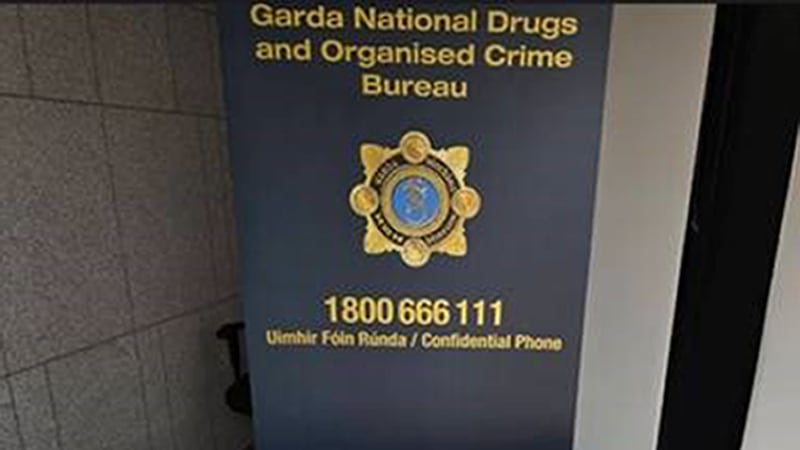James Bernard Fagan, who was born 150 years ago on May 18th, was an actor, playwright, theatre manager and director, several of whose plays were adapted as films. He was active mainly in England, and as a director, he has been credited with popularising the plays of Anton Chekov and Sean O’Casey in that country.
He was born in Belfast, the eldest of five children of John (later Sir John) Fagan, originally from Co Laois (then Queen’s County), and Mary Hughes, of Belfast. His father was a surgeon at the Belfast Royal Hospital and an inspector of reformatories. James attended boarding school at the Jesuit Clongowes Wood College, Clane, Co Kildare, before going on to Trinity College, Oxford, in 1892, where he studied law but left without graduating. The law and the church were considered as possible careers, and he worked in the Indian civil service for a time, but in 1895 he opted for acting.
After two years with Sir Frank Benson’s acting company, he moved on to Herbert Beerbohm Tree’s company at Her Majesty’s Theatre, London, where he appeared in Katherine and Petruchio, Julius Caesar and The Musketeers, among other plays.
He turned to writing for the stage in 1899, beginning with The Rebel, and he followed that up with 14 more plays, among which were The Prayer and the Sword (1904), a drama in prose and verse; Shakespeare v Shaw (1905), a revue; Bella Donna (1911), about a cruel, treacherous, evil but fascinating woman; Hawthorne of the USA (1913), a comedy about the romantic entanglements of an American in the Balkans; And So to Bed (1926), a comedy about Samuel Pepys, MP and administrator of the Royal Navy, set after Pepys makes his last entry in his famous diary.
READ MORE
Following a return to the stage for a few years from 1913, he turned to directing/producing in 1917 and became manager of the Royal Court Theatre on London’s Sloane Square, the next year, where he presented some notable Shakespearean productions.
His revivals of Twelfth Night, The Merchant of Venice and A Midsummer Night’s Dream were described by the London Times as “memorable for their freshness, sanity and distinction” and worthy of “a place in theatrical history”.
He produced the British premiere of George Bernard Shaw’s pre-war satire Heartbreak House in 1921 and his adaptation of Robert Louis Stevenson’s Treasure Island in December the following year at the Savoy Theatre proved hugely popular and was revived each Christmas until the outbreak of the second World War. Moving to Oxford in 1923, he managed the newly established Oxford Playhouse, where he assembled a talented young company of actors, including Margaret Rutherford, Raymond Massey, John Gielgud, Flora Robson, Tyrone Guthrie and Robert Donat.
At the Oxford Playhouse, he directed works by Anton Chekov, Henrik Ibsen, August Strindberg and John Millington Synge. He also produced at other theatres, where he did much to popularise Chekov’s plays in England. He did likewise for Sean O’Casey, when he directed the London premiere of Juno and the Paycock (November 1925) at the Royalty Theatre, and the London premiere of The Plough and the Stars (May 1926) at the Fortune Theatre.
Receiving little support from Oxford University or Oxford playgoers, he resigned from the playhouse in 1929 and became director of the Festival Theatre, Cambridge, while also managing works for the Irish Players, founded by Arthur Sinclair, but by this time in his life, he was increasingly attracted to the American film industry. He was in Hollywood for Paramount’s filming of his 1922 play, The Wheel, which was retitled The Wheel of Life for the 1929 film. His 1931 play, The Improper Duchess, became a film of the same name in 1936, and his play Bella Donna was filmed no fewer than four times, including posthumously in 1946 under the title Temptation. Other Hollywood film work included his co-adaptation of the screenplay for the 1932 film, Smilin’ Through, and he co-wrote Paramount’s Forgotten Commandments the same year.
He married the British actress Elizabeth Susan Kirby in 1897 but their marriage was later dissolved. In 1914, he married another actress, Ada Bryant (formerly Mrs Ada Bevan Ritchie), who acted under the stage name Mary Grey. They had one daughter, Gemma Fagan, who also took up acting. His hobbies included golf and tennis.
He died in Hollywood, California, on February 17th, 1933, of a heart attack following a bout of influenza. He was 59 years old. His remains were returned to England for burial.
















